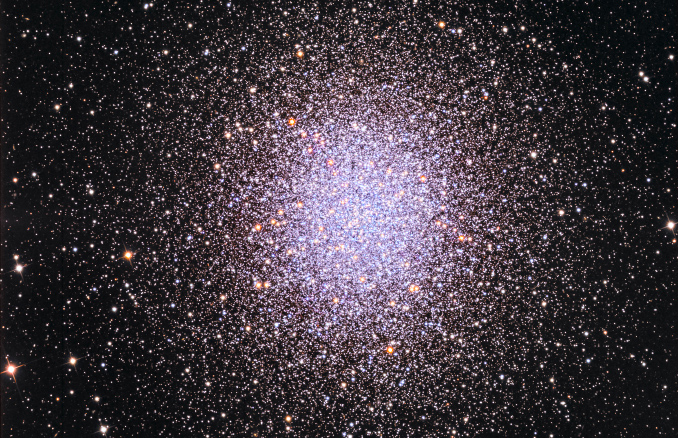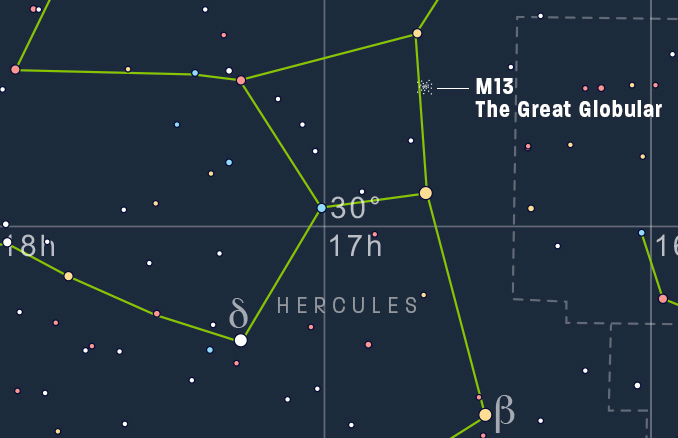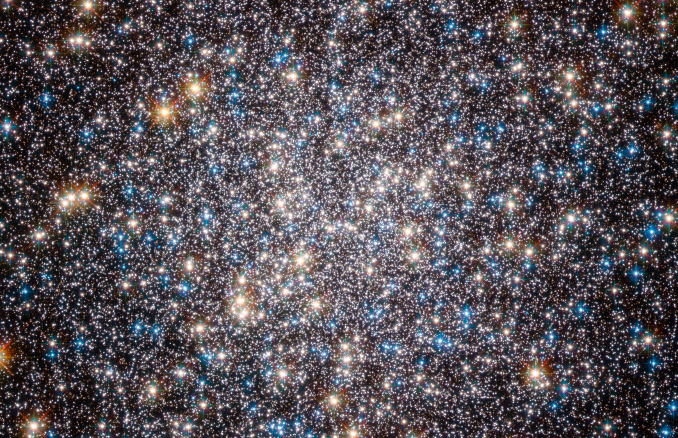Zero-in on Messier 13, the great Hercules globular – Astronomy Now

Messier 13 (NGC 6205) in Hercules is another of those truly celebrated deep-sky objects like the Orion Nebula, the Pleiades and the Andromeda galaxy. Its icon status is reinforced by its alternative and long-standing name tag, the Great Cluster in Hercules, which these days is often amended to the Great Globular in Hercules. It’s universally considered as the finest globular cluster in the northern sky and is one of the Go-To objects in the late-spring to early summer sky.

Ancient balls of stars
Globular clusters are ancient objects, the vast majority born 10 to 13 billion years ago, when the Universe was in its infancy. They are spectacular spheres of hundreds of thousands of old, population II stars (highly evolved, low-mass main-sequence stars) and red giants jam packed into regions commonly only 50 to 200 light years across. Over 150 are known in our Galaxy.
Messier 13 is one of the largest known globular clusters, with a diameter of around 145 light years. Its 500-million-year journey around the galactic centre is highly elliptical; currently it lies around 23,000 light years away from the Sun, not too much further than its closest possible distance to the galactic centre of 16,000 light years, but it can lie as remote as 80,000 light years from the Sun. Astronomers believe M13 contains around 300,000 stars, but substantially more may be gravitationally bound to it. Messier 13’s core must be a spectacular place for any planet orbiting a star there. The density of stars is thought to be about 100 times greater than in the neighbourhood of our Sun.

Find M13 and observe it
Messier 13 is easy to find and observe. Shining brightly at magnitude +5.7, it’s a challenge to see with the naked eye under optimum conditions but is easy to locate through a pair of binoculars as a nebulous patch. Look for Hercules’ famous ‘Keystone’ asterism, a distinctive quadrilateral of third- and fourth-magnitude stars, including magnitude +2.8 zeta (ζ), which marks the south-western corner. Then, moving clockwise, epsilon (ε, +3.5) is at the south-east, pi (π, +3.9) lies to the north-east and finally eta (η, +3.5) marks the north-western corner. Messier 13 lies about a third of the way along a line drawn between eta and zeta.
Hercules and M13 hit the southern meridian at about midnight BST in early June, but both are on show well before this. A telescope as small as 80mm (~three inches) in aperture and operating at a power of around 20
You’ll never forget your first sight of Messier 13 through a moderate-aperture telescope. Operating at high magnification, a 150–200mm (six- to eight-inch) telescope will resolve the cluster’s individual stars, revealing the glory of masses of sparkling suns filling the field-of-view and visible right down into M13’s core.

Read More: Zero-in on Messier 13, the great Hercules globular – Astronomy Now

